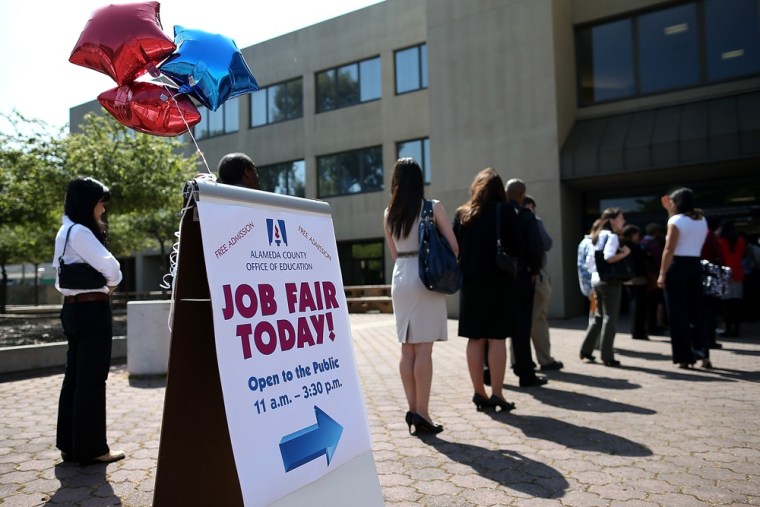Weak sales growth at companies is likely to spell an equally troubled bottom line for the nation's 11.7 million unemployed.
Quarterly earnings thus far have shown the typical strong level of profit beats, with just more than two of three companies in the Standard & Poor's 500 exceeding Wall Street expectations.
But when it comes to actual sales growth, the results have been just north of dismal.
A mere 38 percent of the 271 S&P 500 companies that had reported through Friday topped revenue estimates, with the aggregate figure actually showing a sales decline of 1.45 percent, according to Zacks Investment Research.
(Read More: Earnings Results Flashing Warning Sign for Stocks)
Such weak profit growth generally equates with low hiring.
"The loss of momentum in the U.S. economy has been palpable, but what looks to be a soft patch in yet another 2 percent year for real economic growth now has the potential to morph into something more painful," RBC Capital Markets economists Tom Porcelli and Jacob Oubina said in a report.
In such an environment, companies unable to expand their top lines (revenue) likely will focus on cutting expenses to achieve profits.
"What is important to consider on the back of these results is that employment tends to become the victim of a disappointing revenue backdrop," RBC said. "In other words, headcount tends to become the focus in any effort to extract savings and boost bottom line results."
That's significant considering the market gets its first look at April hiring trends Friday when the government releases its nonfarm payrolls report.
(Read More: How Big Are Underground Payrolls? Try $2 Trillion)
The labor market is coming off an ugly March in which payrolls grew by just 80,000. Unemployment ticked down to 7.6 percent, but that was due mostly to generational lows in the labor force participation rate.
If trends hold, the March number likely will get revised up a bit, perhaps to the 100,000 range, but the troubling trend of first-quarter revenue weakness indicates that April probably won't be much better.
"Keep in mind the last time revenue surprises to the upside were this low relative to earnings beats—back in Q2 and Q3 2012—private (payrolls) averaged just 129,000 per month in one of the weakest strings since we stopped shedding jobs back in early 2010," RBC said.
Of course, from an investment standpoint, the weakening employment backdrop hasn't been an issue.
(Read More: Economy May Stink, but Market Doesn't Care)
Poor jobs data only solidifies the Federal Reserve in its efforts to keep the liquidity taps flowing in the form of its $85 billion a month bond-buying program.
Economists expect that the Fed's statement later this week following its Open Markets Committee meeting will reflect its willingness to prop up stock prices, minus the recent talk about possible tapering later this year.
"On the growth side, we expect a downgrade to the most recent (Fed) statement that 'labor market conditions have shown signs of improvement …' and a downgrade to the notion that household spending 'advanced' given the weak March retail sales report," said Jan Hatzius, chief U.S. economist at Goldman Sachs.
(Read More: More Money Printing? Here's How It Could Happen)
"With regard to policy, we expect no changes to the current language regarding either asset purchases or interest rate hikes," he added.
Hatzius said he expects a slight increase in job creation from March, while RBC is projecting a net gain of 140,000, a number still considered below what is needed to lower the jobless rate absent further deterioration in job market participation.
Deutsche Bank economists, among the most buoyant of the Wall Street crowd, expect payrolls to increase 190,000 on the back of housing sector improvements that "should not be underestimated."
